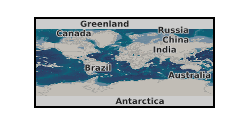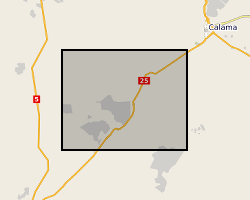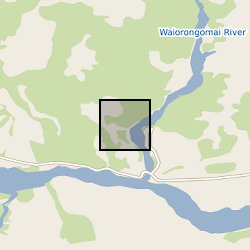Weathering
Type of resources
Available actions
Topics
Keywords
Contact for the resource
Provided by
Years
Formats
Representation types
Update frequencies
-

The data deposit includes results from 12 experiments that reacted carbon dioxide, seawater and limestone as a method of CO2 sequestration (as xlsx files). The data were obtained by Dr Huw Pullin, Cardiff University as part of a UKRI funded research project. Experiments were conducted under controlled temperatures (20degC), and CO2 pressures (5 and 50% v/v at 1 atm). The methods used are described in Xing et al., 2022 Chemical Engineering Journal. 431. 134096 DOI: 10.1016/j.cej.2021.134096
-

The processes by which frost shatters rock are subject to controversy. The main objective of the proposed research is to develop a new methodology for experimentally testing a model of ice segregation in permafrost. Using specialist cold-room facilities in the CRNS Centre de Geomorphologie, Caen (France), the methodology will simulate the bedrock thermal and hydrological regime at the top of cold permafrost in order to determine whether growth of segregated ice within the simulated permafrost shatters a large block of frost susceptible rock (chalk). Verification of the ice-segregation hypothesis by the proposed experiment would have international significance to the fields of permafrost science, engineering and rock weathering because it would emphasise the unified nature and consequences of ground-ice development in fine-grained soils and rocks.
-

The data set comprises rhenium isotope compositions, rhenium concentrations, total organic carbon concentrations, and titanium concentrations measured from bulk rock digestions of the Eagle Ford Shale in South Texas, USA. The samples were obtained from coeval strata recovered in drill core Innes-1 and outcrop sections DR5 and DR12. The project aimed to compare the isotopic composition of Re before and after oxidative weathering. Rhenium concentrations were measured by isotope dilution, using liquid-liquid (alcohol) extraction and measurement by MC-ICP-MS. Rhenium isotopes were measured after a 3-stage column purification procedure using MC-ICP-MS. MC-ICP-MS measurements were made with the addition of a tungsten spike to correct for instrumental mass fractionation. Total organic carbon concentrations were measured by Rock-Eval pyrolysis (Rock-Eval VI) and Ti concentrations by ICP-AES.
-

These data accompany a manuscript, titled: Stream and Slope Weathering Effects on Organic-rich Mudstone Geochemistry and Implications for Hydrocarbon Source Rock Assessment: A Bowland Shale Case Study All files with prefix 'Man_1' relate to this submission. The manuscript was submitted to the journal Chemical Geology in December 2016. Data include: 1) A range of photographs from the outcrop, drill cores, sub-samples, 'weathering grades' and thin section microphotographs from the Bowland Shale; 2) The results of mineralogical (whole rock powder x-ray diffraction; XRD) analyses for 18 subsamples; 3) The results of inorganic geochemical analyses (LECO elemental C and S, x-ray fluorescence major and trace elements) for 18 subsamples; 4) The results of organic geochemical analyses (Rock-Eval pyrolysis, d13Corg) for 20 subsamples; 5) RStudio scripts used to conduct statistical analyses (e.g., Principal Components Analysis) and generation of figures.
-

This spreadsheet contains (U-Th-Sm)/He data for 73 hematite samples from the supergene profile of the Spence porphyry copper deposit in the Central Andes. These data are discussed in the G-cubed publication titled 'A rusty record of weathering and groundwater movement in the hyperarid Central Andes' (Shaw et al., 2021). Spence porphyry copper deposit Drill hole SPD0324, UTM WGS1984 19S, E 474975.22, N 7481100.39 Drill hole SPD 1848, UTM WGS1984 19S, E 474998.29, N 7481399.87 Drill hole SPD 0402, UTM WGS1984 19S, E 473969.87, N 7479755.01
-

These data were collected to study oxidative weathering processes in the Waiapu River catchment, New Zealand, with potential carbon release sourced from the oxidation of petrogenic organic carbon or carbonate dissolution coupled to the oxidation of sulfide minerals. There, in mudstones exposed in a highly erosive gully complex, in situ CO2 emissions were measured with drilled gas accumulation chambers following the design by Soulet et al. (2018, Biogeosciences 15, 4087-4102, https://doi.org/10.5194/bg-15-4087-2018). Temporal and spatial variability in CO2 flux can be put in context with environmental changes (e.g., temperature and hydrology). For this, CO2 release from 5 different chambers, which were installed over a transect of ~ 10 m length in a gully above a nearby streambed, was measured several times over a short study period (circa one week). In addition, the gaseous CO2 storage (partial pressure) in the shallow weathering zone was measured prior to a CO2 flux measurement. To understand the source of CO2, gas samples were collected and their stable and radioactive carbon isotope compositions determined. In this process, we identified a contaminant, which was associated with the chamber installation, that can be traced in the gas samples that were collected within 4 days following the installation. Details of the subsequent data analysis and interpretation can be found in: Roylands et al. 2022, Chemical Geology: Capturing the short-term variability of carbon dioxide emissions from sedimentary rock weathering in a remote mountainous catchment, New Zealand. This work was supported by the European Research Council (Starting Grant to Robert G. Hilton, ROC-CO2 project, grant 678779).
 NERC Data Catalogue Service
NERC Data Catalogue Service